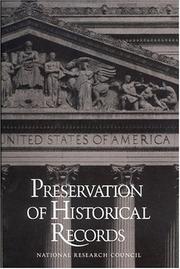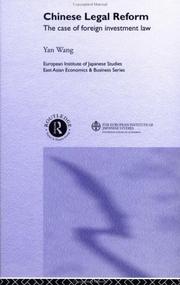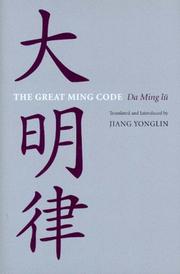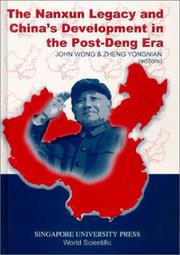| Listing 1 - 10 of 10 |
Sort by
|
Book
ISBN: 9781463206437 1463206437 146323726X 9781463237264 Year: 2017 Publisher: Piscataway, New Jersey : Gorgias Press,
Abstract | Keywords | Export | Availability | Bookmark
 Loading...
Loading...Choose an application
- Reference Manager
- EndNote
- RefWorks (Direct export to RefWorks)
A short guide for studying, editing and translating medieval texts in manuscript form, outlining the technical steps for preparing a medieval manuscript for print: evaluating and describing the manuscript itself (transmission, provenance, and physical description), textual criticism (reconstruction, emendation, authenticity, dating, and authorship), and steps to preparing an edition or translation.
Manuscripts, Medieval --- Transmission of texts --- Literature, Medieval --- 091.14 --- 82.083 --- 09 <07> --- 09 <07> Handschriften. Oude en merkwaardige drukken. Curiosa--Cursussen. Instructies. Onderwijs --- Handschriften. Oude en merkwaardige drukken. Curiosa--Cursussen. Instructies. Onderwijs --- 82.083 Teksteditie. Editiewetenschap --- Teksteditie. Editiewetenschap --- 091.14 Codicologie. Codices. Scriptoria --- Codicologie. Codices. Scriptoria --- Literary transmission --- Manuscript transmission --- Textual transmission --- Criticism, Textual --- Editions --- Manuscripts --- Medieval manuscripts --- Editing --- Codicology. --- Manuscriptology --- Bibliography
Book
ISBN: 1501708279 1501708287 9781501708275 9781501708282 9781501705113 1501705113 Year: 2017 Publisher: Ithaca, New York ; London, [England] : Cornell University Press,
Abstract | Keywords | Export | Availability | Bookmark
 Loading...
Loading...Choose an application
- Reference Manager
- EndNote
- RefWorks (Direct export to RefWorks)
Beowulf, like The Iliad and The Odyssey, is a foundational work of Western literature that originated in mysterious circumstances. In The Transmission of "Beowulf," Leonard Neidorf addresses philological questions that are fundamental to the study of the poem. Is Beowulf the product of unitary or composite authorship? How substantially did scribes alter the text during its transmission, and how much time elapsed between composition and preservation?Neidorf answers these questions by distinguishing linguistic and metrical regularities, which originate with the Beowulf poet, from patterns of textual corruption, which descend from copyists involved in the poem's transmission. He argues, on the basis of archaic features that pervade Beowulf and set it apart from other Old English poems, that the text preserved in the sole extant manuscript (ca. 1000) is essentially the work of one poet who composed it circa 700. Of course, during the poem's written transmission, several hundred scribal errors crept into its text. These errors are interpreted in the central chapters of the book as valuable evidence for language history, cultural change, and scribal practice. Neidorf's analysis reveals that the scribes earnestly attempted to standardize and modernize the text's orthography, but their unfamiliarity with obsolete words and ancient heroes resulted in frequent errors. The Beowulf manuscript thus emerges from his study as an indispensible witness to processes of linguistic and cultural change that took place in England between the eighth and eleventh centuries. An appendix addresses J. R. R. Tolkien's Beowulf: A Translation and Commentary, which was published in 2014. Neidorf assesses Tolkien's general views on the transmission of Beowulf and evaluates his position on various textual issues.
Language and culture --- Transmission of texts --- Epic poetry, English (Old) --- Culture and language --- Culture --- Literary transmission --- Manuscript transmission --- Textual transmission --- Criticism, Textual --- Editions --- Manuscripts --- Anglo-Saxon epic poetry --- English epic poetry, Old --- Epic poetry, Anglo-Saxon --- Old English epic poetry --- English poetry --- History --- Criticism, Textual. --- Beowulf --- Bjowulf --- 820 "06/10" BEOWULF --- 091 --- 091.14 --- 930.85.42 <41> --- 930.85.42 <41> Cultuurgeschiedenis: Middeleeuwen--Verenigd Koninkrijk van Groot-Brittannië en Noord-Ierland --- Cultuurgeschiedenis: Middeleeuwen--Verenigd Koninkrijk van Groot-Brittannië en Noord-Ierland --- 091.14 Codicologie. Codices. Scriptoria --- Codicologie. Codices. Scriptoria --- 820 "06/10" BEOWULF Engelse literatuur--?"06/10"--BEOWULF --- Engelse literatuur--?"06/10"--BEOWULF --- Handschriftenkunde. Handschriftencatalogi--Engels
Multi
ISSN: 18725155 ISBN: 9004175199 9047428641 1283851865 Year: 2009 Volume: v. 6 Publisher: Leiden [etc.] Brill
Abstract | Keywords | Export | Availability | Bookmark
 Loading...
Loading...Choose an application
- Reference Manager
- EndNote
- RefWorks (Direct export to RefWorks)
This study presents detailed information on the book production per century and on the uses of medieval manuscripts in eleven areas of the Latin West. Based on a sample from an extensive library and on additional information the numbers of manuscripts surviving from the period 500 – 1500 have been assessed statistically. Other data have been used to quantify the loss rates of such books in the Latin West. Combining both sets of data allowed the estimation of the medieval production rates of manuscripts. Book production during the Middle Ages can be seen as a century-average indicator of local economic output. With a number of explanatory variables (monasteries, universities) the medieval book production in the Latin West can be adequately explained.
Book industries and trade --- Books --- Codicology --- Manuscripts --- Manuscripts, Medieval --- Library materials --- Publications --- Bibliography --- Cataloging --- International Standard Book Numbers --- Book trade --- Cultural industries --- Manufacturing industries --- Medieval manuscripts --- Codices --- Nonbook materials --- Archival materials --- Charters --- Diplomatics --- Illumination of books and manuscripts --- Paleography --- Transmission of texts --- Manuscriptology --- History --- Statistical methods. --- Reproduction --- History.

ISBN: 030903681X 9786610246816 1280246812 0309581737 0585155739 9780585155739 9780309036818 Year: 1986 Publisher: Washington, D.C. : National Academy Press,
Abstract | Keywords | Export | Availability | Bookmark
 Loading...
Loading...Choose an application
- Reference Manager
- EndNote
- RefWorks (Direct export to RefWorks)
LANGUAGE ARTS & DISCIPLINES --- Library & Information Science / General --- Manuscripts --- Archival materials --- History --- Book Studies & Arts --- Education --- Social Sciences --- Conservation and restoration --- Sources --- 930.25:025.8 --- 025.7 --- -History --- -Manuscripts --- -Codices --- Books --- Nonbook materials --- Charters --- Codicology --- Diplomatics --- Illumination of books and manuscripts --- Paleography --- Transmission of texts --- Annals --- Auxiliary sciences of history --- Materials, Archival --- Archives --- Archiefwetenschap. Archivistiek-:-Opstelling en opberging van boeken in het magazijn. Boekverzorging. Etiketten --- Conserveren van boeken. Inbinden. Microfilmeren. Digitaliseren --- -Conservation and restoration --- Conservation and restoration. --- -Archiefwetenschap. Archivistiek-:-Opstelling en opberging van boeken in het magazijn. Boekverzorging. Etiketten --- 025.7 Conserveren van boeken. Inbinden. Microfilmeren. Digitaliseren --- 930.25:025.8 Archiefwetenschap. Archivistiek-:-Opstelling en opberging van boeken in het magazijn. Boekverzorging. Etiketten --- -025.7 Conserveren van boeken. Inbinden. Microfilmeren. Digitaliseren --- Codices --- Conservation of archival materials --- Preservation of archival materials --- Documents, Conservation of --- Preservation --- Sources&delete&

ISBN: 0415249716 0203278046 1280217677 020316427X 9780203164273 9781134533602 9781134533640 9781134533657 9780415249713 Year: 2002 Publisher: New York : Routledge,
Abstract | Keywords | Export | Availability | Bookmark
 Loading...
Loading...Choose an application
- Reference Manager
- EndNote
- RefWorks (Direct export to RefWorks)
This collection assesses the legal developments which have taken place since the 1980s in China. It discusses China's achievements in building a new legal system and identifies the theoretical and institutional limitations of China's legal reform. Featuring an extensive case-study of foreign investment law, this book considers a wide-ranging set of interconnecting variables in China's changing social context, in order to examine and illustrate the gap between the text and actual practice of the law, especially as it relates to foreign direct investment. It will be of great interest to students and scholars of Chinese Law, Business and Economics, as well as to business investors in China.
S08/1100 --- S08/0562 --- S08/0350 --- S10/0430 --- Business enterprises, Foreign --- -Investments, Foreign --- -Law reform --- -Legal reform --- Capital exports --- Capital imports --- FDI (Foreign direct investment) --- Foreign direct investment --- Foreign investment --- Foreign investments --- International investment --- Offshore investments --- Outward investments --- Capital movements --- Investments --- Foreign business enterprises --- Business enterprises --- China: Law and legislation--International law --- China: Law and legislation--Trade: since 1949 --- China: Law and legislation--General works and codices: since 1949 --- China: Economics, industry and commerce--Investment --- Law and legislation --- -Law and legislation --- -History --- Investments, Foreign --- Law reform --- Legal reform --- History --- Law --- General and Others --- History.
Book
ISBN: 0253029201 9780253029201 9780253353771 0253353777 Year: 2010 Publisher: Bloomington, Indiana ; Indianapolis, Indiana : Indiana University Press,
Abstract | Keywords | Export | Availability | Bookmark
 Loading...
Loading...Choose an application
- Reference Manager
- EndNote
- RefWorks (Direct export to RefWorks)
Over the course of ten centuries, Islam developed a rich written heritage that is visible in paintings, calligraphies, and manuscripts. The Islamic Manuscript Tradition explores this aspect of Islamic history with studies of the materials and tools of literate culture, including pens, inks, and papers, Qur'ans, Persian and Mughal illustrated manuscripts, Ottoman devotional works, cartographical manuscripts, printed books, and Islamic erotica. Seven essays present new scholarship on a wide range of topics including collection, miniaturization, illustrated devotional books, the history of the printing press in Islamic lands, and the presence and function of erotic paintings. This beautifully produced volume includes 111 color illustrations and provides a valuable new resource for students and scholars of Islamic art.
Manuscripts, Turkish --- Manuscripts, Persian --- Manuscripts, Arabic --- Islamic illumination of books and manuscripts. --- Early printed books --- Islam --- Islamic civilization --- Manuscripts --- Illumination of books and manuscripts, Islamic --- Muslim illumination of books and manuscripts --- Illumination of books and manuscripts --- Bibliography --- Books --- Arabic manuscripts --- Mohammedanism --- Muhammadanism --- Muslimism --- Mussulmanism --- Religions --- Muslims --- Civilization, Islamic --- Muslim civilization --- Civilization --- Civilization, Arab --- Codices --- Nonbook materials --- Archival materials --- Charters --- Codicology --- Diplomatics --- Paleography --- Transmission of texts --- Turkish manuscripts --- Persian manuscripts --- Persian literature --- Manuscripts. --- Lilly Library (Indiana University, Bloomington) --- Indiana University --- Indiana University, Bloomington --- Indiana University. --- Indiana University, Bloomington.
Book
ISBN: 9004399291 9004346732 9789004346734 Year: 2019 Publisher: Leiden: Brill,
Abstract | Keywords | Export | Availability | Bookmark
 Loading...
Loading...Choose an application
- Reference Manager
- EndNote
- RefWorks (Direct export to RefWorks)
Ancient Manuscripts in Digital Culture presents an overview of the digital turn in Ancient Jewish and Christian manuscripts visualisation, data mining and communication. Edited by David Hamidović, Claire Clivaz and Sarah Bowen Savant, it gathers together the contributions of seventeen scholars involved in Biblical, Early Jewish and Christian studies. The volume attests to the spreading of digital humanities in these fields and presents fundamental analysis of the rise of visual culture as well as specific test-cases concerning ancient manuscripts. Sophisticated visualisation tools, stylometric analysis, teaching and visual data, epigraphy and visualisation belong notably to the varied overview presented in the volume.
digital humaniora --- Manuscripts --- Christian literature, Early --- Jewish religious literature --- Communication in learning and scholarship --- Data mining. --- Digital humanities. --- Digitization. --- History and criticism --- Data processing. --- Technological innovations. --- Humanities --- Algorithmic knowledge discovery --- Factual data analysis --- KDD (Information retrieval) --- Knowledge discovery in data --- Knowledge discovery in databases --- Mining, Data --- Database searching --- Communication in scholarship --- Scholarly communication --- Learning and scholarship --- Religious literature, Jewish --- Jewish literature --- Religious literature --- Early Christian literature --- Patristic literature --- Codices --- Books --- Nonbook materials --- Archival materials --- Charters --- Codicology --- Diplomatics --- Illumination of books and manuscripts --- Paleography --- Transmission of texts --- Data processing --- Information technology --- Biblical studies & exegesis --- Manuscripts - Digitization --- Christian literature, Early - History and criticism - Data processing --- Jewish religious literature - History and criticism - Data processing --- Communication in learning and scholarship - Technological innovations --- Data mining --- Digital humanities --- Bible --- Criticism, interpretation, etc. --- Electronic data processing.

ISBN: 0295804009 9780295804002 029598449X 9780295984490 029599374X 9780295993744 Year: 2005 Publisher: Seattle : University of Washington Press,
Abstract | Keywords | Export | Availability | Bookmark
 Loading...
Loading...Choose an application
- Reference Manager
- EndNote
- RefWorks (Direct export to RefWorks)
Imperial China’s dynastic legal codes provide a wealth of information for historians, social scientists, and scholars of comparative law and of literary, cultural, and legal history. Until now, only the Tang (618–907 C.E.) and Qing (1644–1911 C.E.) codes have been available in English translation. The present book is the first English translation of The Great Ming Code (Da Ming lu), which reached its final form in 1397. The translation is preceded by an introductory essay that places the Code in historical context, explores its codification process, and examines its structure and contents. A glossary of Chinese terms is also provided.One of the most important law codes in Chinese history, The Great Ming Code represents a break with the past, following the alien-ruled Yuan (Mongol) dynasty, and the flourishing of culture under the Ming, the last great Han-ruled dynasty. It was also a model for the Qing code, which followed it, and is a fundamental source for understanding Chinese society and culture. The Code regulated all the perceived major aspects of social affairs, aiming at the harmony of political, economic, military, familial, ritual, international, and legal relations in the empire and cosmic relations in the universe. The all-encompassing nature of the Code makes it an encyclopedic document, providing rich materials on Ming history. Because of the pervasiveness of legal proceedings in the culture generally, the Code has relevance far beyond the specialized realm of Chinese legal studies. The basic value system and social norms that the Code imposed became so thoroughly ingrained in Chinese society that the Manchus, who conquered China and established the Qing dynasty, chose to continue the Code in force with only minor changes.The Code made a considerable impact on the legal cultures of other East Asian countries: Yi dynasty Korea, Le dynasty Vietnam, and late Tokugawa and early Meiji Japan. Examining why and how some rules in the Code were adopted and others rejected in these countries will certainly enhance our understanding of the shared culture and indigenous identities in East Asia.The open access publication of this book was made possible by a grant from the James P. Geiss and Margaret Y. Hsu Foundation.
Law --- S08/0200 --- China: Law and legislation--General works and codices: traditional --- China. --- Cina --- Kinë --- Cathay --- Chinese National Government --- Chung-kuo kuo min cheng fu --- Republic of China (1912-1949) --- Kuo min cheng fu (China : 1912-1949) --- Chung-hua min kuo (1912-1949) --- Kina (China) --- National Government (1912-1949) --- China (Republic : 1912-1949) --- People's Republic of China --- Chinese People's Republic --- Chung-hua jen min kung ho kuo --- Central People's Government of Communist China --- Chung yang jen min cheng fu --- Chung-hua chung yang jen min kung ho kuo --- Central Government of the People's Republic of China --- Zhonghua Renmin Gongheguo --- Zhong hua ren min gong he guo --- Kitaĭskai︠a︡ Narodnai︠a︡ Respublika --- Činská lidová republika --- RRT --- Republik Rakjat Tiongkok --- KNR --- Kytaĭsʹka Narodna Respublika --- Jumhūriyat al-Ṣīn al-Shaʻbīyah --- RRC --- Kitaĭ --- Kínai Népköztársaság --- Chūka Jinmin Kyōwakoku --- Erets Sin --- Sin --- Sāthāranarat Prachāchon Čhīn --- P.R. China --- PR China --- PRC --- P.R.C. --- Chung-kuo --- Zhongguo --- Zhonghuaminguo (1912-1949) --- Zhong guo --- Chine --- République Populaire de Chine --- República Popular China --- Catay --- VR China --- VRChina --- 中國 --- 中国 --- 中华人民共和国 --- Jhongguó --- Bu̇gu̇de Nayiramdaxu Dundadu Arad Ulus --- Bu̇gu̇de Nayiramdaqu Dumdadu Arad Ulus --- Bu̇gd Naĭramdakh Dundad Ard Uls --- BNKhAU --- БНХАУ --- Khi︠a︡tad --- Kitad --- Dumdadu Ulus --- Dumdad Uls --- Думдад Улс --- Kitajska --- China (Republic : 1949- )
Book
ISBN: 0295801662 9780295801667 9780295990651 0295990651 Year: 2011 Publisher: Seattle : University of Washington Press,
Abstract | Keywords | Export | Availability | Bookmark
 Loading...
Loading...Choose an application
- Reference Manager
- EndNote
- RefWorks (Direct export to RefWorks)
After overthrowing the Mongol Yuan dynasty, Zhu Yuanzhang, the founder of the Ming dynasty (1368-1644), proclaimed that he had obtained the Mandate of Heaven (Tianming), enabling establishment of a spiritual orientation and social agenda for China. Zhu, emperor during the Ming’s Hongwu reign period, launched a series of social programs to rebuild the empire and define Chinese cultural identity. To promote its reform programs, the Ming imperial court issued a series of legal documents, culminating in The Great Ming Code (Da Ming lu), which supported China’s legal system until the Ming was overthrown and also served as the basis of the legal code of the following dynasty, the Qing (1644-1911).This companion volume to Jiang Yonglin’s translation of The Great Ming Code (2005) analyzes the thought underlying the imperial legal code. Was the concept of the Mandate of Heaven merely a tool manipulated by the ruling elite to justify state power, or was it essential to their belief system and to the intellectual foundation of legal culture? What role did law play in the imperial effort to carry out the social reform programs?Jiang addresses these questions by examining the transformative role of the Code in educating the people about the Mandate of Heaven. The Code served as a cosmic instrument and moral textbook to ensure “all under Heaven” were aligned with the cosmic order. By promoting, regulating, and prohibiting categories of ritual behavior, the intent of the Code was to provide spiritual guidance to Chinese subjects, as well as to acquire political legitimacy. The Code also obligated officials to obey the supreme authority of the emperor, to observe filial behavior toward parents, to care for the welfare of the masses, and to maintain harmonious relationships with deities. This set of regulations made officials the representatives of the Son of Heaven in mediating between the spiritual and mundane worlds and in governing the human realm.This study challenges the conventional assumption that law in premodern China was used merely as an arm of the state to maintain social control and as a secular tool to exercise naked power. Based on a holistic approach, Jiang argues that the Ming ruling elite envisioned the cosmos as an integrated unit; they saw law, religion, and political power as intertwined, remarkably different from the “modern” compartmentalized worldview. In serving as a cosmic instrument to manifest the Mandate of Heaven, The Great Ming Code represented a powerful religious effort to educate the masses and transform society.
Religion and law --- Law --- Acts, Legislative --- Enactments, Legislative --- Laws (Statutes) --- Legislative acts --- Legislative enactments --- Jurisprudence --- Legislation --- Law and religion --- History --- Sources --- Religious aspects --- Ming lü. --- 明律 --- Da Ming lü --- Taemyŏngnyul --- Dai Min ritsu --- China --- Cina --- Kinë --- Cathay --- Chinese National Government --- Chung-kuo kuo min cheng fu --- Republic of China (1912-1949) --- Kuo min cheng fu (China : 1912-1949) --- Chung-hua min kuo (1912-1949) --- Kina (China) --- National Government (1912-1949) --- China (Republic : 1912-1949) --- People's Republic of China --- Chinese People's Republic --- Chung-hua jen min kung ho kuo --- Central People's Government of Communist China --- Chung yang jen min cheng fu --- Chung-hua chung yang jen min kung ho kuo --- Central Government of the People's Republic of China --- Zhonghua Renmin Gongheguo --- Zhong hua ren min gong he guo --- Kitaĭskai︠a︡ Narodnai︠a︡ Respublika --- Činská lidová republika --- RRT --- Republik Rakjat Tiongkok --- KNR --- Kytaĭsʹka Narodna Respublika --- Jumhūriyat al-Ṣīn al-Shaʻbīyah --- RRC --- Kitaĭ --- Kínai Népköztársaság --- Chūka Jinmin Kyōwakoku --- Erets Sin --- Sin --- Sāthāranarat Prachāchon Čhīn --- P.R. China --- PR China --- Chung-kuo --- Zhongguo --- Zhonghuaminguo (1912-1949) --- Zhong guo --- Chine --- République Populaire de Chine --- República Popular China --- Catay --- VR China --- VRChina --- 中國 --- 中国 --- 中华人民共和国 --- Jhongguó --- Bu̇gu̇de Nayiramdaxu Dundadu Arad Ulus --- Bu̇gu̇de Nayiramdaqu Dumdadu Arad Ulus --- Bu̇gd Naĭramdakh Dundad Ard Uls --- Khi︠a︡tad --- Kitad --- Dumdadu Ulus --- Dumdad Uls --- Думдад Улс --- Kitajska --- China (Republic : 1949- ) --- Politics and government --- Sources. --- S04/0670 --- S08/0200 --- S13A/0200 --- China: History--Ming: 1368 - 1644 --- China: Law and legislation--General works and codices: traditional --- China: Religion--General works --- PRC --- P.R.C. --- BNKhAU --- БНХАУ --- Asian history

ISBN: 9971692465 9786611960506 1281960500 9812811346 9789812811349 9781281960504 9789971692469 6611960503 Year: 2001 Publisher: Singapore : River Edge, N.J. : Singapore University Press, National University of Singapore ; World Scientific,
Abstract | Keywords | Export | Availability | Bookmark
 Loading...
Loading...Choose an application
- Reference Manager
- EndNote
- RefWorks (Direct export to RefWorks)
In the spring of 1992, Deng Xiaoping made a historical tour of south China, popularly known as the Nanxun ("southern tour"). During the tour, he boldly called for more radical economic reform and further opening up of China. The Nanxun has become a political landmark in the history of the People's Republic of China, much like great events such as the Great Leap Forward, the Cultural Revolution, and the 1989 Tiananmen crackdown. Deng Xiaoping has left his own legacy for the country. The Nanxun belongs to Deng, just as the 1911 revolution belongs to Sun Yat-sen and the comm
China -- Economic policy -- 1976-2000. --- China -- History -- 20th century. --- China -- Politics and government -- 1976-2002. --- Deng, Xiaoping, -- 1904-1997 -- Political and social views. --- Electronic books. -- local. --- East Asia --- Regions & Countries - Asia & the Middle East --- History & Archaeology --- S10/0251 --- S06/0424 --- S08/0350 --- S10/0330 --- China: Economics, industry and commerce--General works and economic history: since 1989 --- China: Politics and government--CCP: since 1989 --- China: Law and legislation--General works and codices: since 1949 --- China: Economics, industry and commerce--Employment --- Deng, Xiaoping --- -Political and social views --- China --- Economic policy --- -Politics and government --- -S10/0251 --- -China -- Economic policy -- 1976-2000. --- -Deng Xiaoping --- deng xiao ping --- Political and social views --- Deng, Xiaoping, --- Political and social views. --- History --- Politics and government --- Teng, Hsiao-pʻing, --- Teng, Shiao-ping, --- Tŭng, So-pʻyŏng, --- Tō, Shōhei, --- Dén, Si︠a︡o-pin, --- Deng, Xiao Ping, --- Dengxiaoping, --- Teng, Hsziao-ping, --- Дэн, Сяопин, --- Dėn, Si︠a︡opin, --- Đặng, Tiểu Bình, --- Tiṅ, Źaʼo-phiṅ, --- Tiṅ-źaʼo-phiṅ, --- 鄧小平, --- 邓小平, --- [トウ] 小平, --- Deng, Bin, --- Teng, Pin, --- 邓斌, --- Tiṅ-śi, --- Cina --- Kinë --- Cathay --- Chinese National Government --- Chung-kuo kuo min cheng fu --- Republic of China (1912-1949) --- Kuo min cheng fu (China : 1912-1949) --- Chung-hua min kuo (1912-1949) --- Kina (China) --- National Government (1912-1949) --- China (Republic : 1912-1949) --- People's Republic of China --- Chinese People's Republic --- Chung-hua jen min kung ho kuo --- Central People's Government of Communist China --- Chung yang jen min cheng fu --- Chung-hua chung yang jen min kung ho kuo --- Central Government of the People's Republic of China --- Zhonghua Renmin Gongheguo --- Zhong hua ren min gong he guo --- Kitaĭskai︠a︡ Narodnai︠a︡ Respublika --- Činská lidová republika --- RRT --- Republik Rakjat Tiongkok --- KNR --- Kytaĭsʹka Narodna Respublika --- Jumhūriyat al-Ṣīn al-Shaʻbīyah --- RRC --- Kitaĭ --- Kínai Népköztársaság --- Chūka Jinmin Kyōwakoku --- Erets Sin --- Sin --- Sāthāranarat Prachāchon Čhīn --- P.R. China --- PR China --- Chung-kuo --- Zhongguo --- Zhonghuaminguo (1912-1949) --- Zhong guo --- Chine --- République Populaire de Chine --- República Popular China --- Catay --- VR China --- VRChina --- 中國 --- 中国 --- 中华人民共和国 --- Jhongguó --- Bu̇gu̇de Nayiramdaxu Dundadu Arad Ulus --- Bu̇gu̇de Nayiramdaqu Dumdadu Arad Ulus --- Bu̇gd Naĭramdakh Dundad Ard Uls --- Khi︠a︡tad --- Kitad --- Dumdadu Ulus --- Dumdad Uls --- Думдад Улс --- Kitajska --- -S06/0424
| Listing 1 - 10 of 10 |
Sort by
|

 Search
Search Feedback
Feedback About UniCat
About UniCat  Help
Help News
News